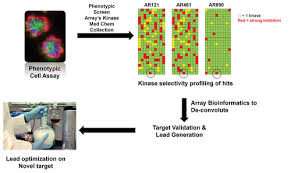 As a technology, which can be utilized to the high-throughput phenotype of cells, phenotype array is widely used in this field. Due to the high understanding for researchers and scientists, here we are going to introduce this product in Creative Proteomics.
As a technology, which can be utilized to the high-throughput phenotype of cells, phenotype array is widely used in this field. Due to the high understanding for researchers and scientists, here we are going to introduce this product in Creative Proteomics.
General introduction
Phenotype arrays act as the third major technology with DNA microarray and proteomic technologies. It also plays a very important role in the genomic era of research and drug development and measuring thousands of cellular phenotypes all at once.
Use of phenotype arrays in Creative Proteomics
In the field of exploring the biology of bacteria, yeasts, fungi and animal cell lines, the high-throughput phemotypic testing is getting more and more important. In Creative Proteomics, this technology can also complete the mission of detecting gene function and improving the genome annotation. Compared with other high-throughput technologies, phenotypic testing needs living cells, providing much more information about the performance of entire cells. However, the major applications of phenotypic array technology is lying in the fields of microbial cell physiology, systems biology and taxonomy and so on.
Advantages of phenotypic array technology
In addition to the massive information that phenotypic array technology can offer we mentioned above, this technology in Creative Proteomics also allows researchers to measure cellular respiration in environmental conditions where cellular growth. What’s more, this technology enables researchers to detect nearly 2000 phenotypes of a microbial cell in a single experiment. And researchers can obtain an unbiased perspective of the effect on cells of genetic differences, environmental change, and exposure to drugs and chemicals with the features of a comprehensive and precise quantitation of phenotypes.
What you can do with phenotype array
1.Researchers can correlate genotypes with phenotypes.
2.You can determine a cell’s metabolic and chemical sensitivity properties.
3.Discovering new targets for antimicrobial compounds
4.Optimizing cell lines and culture conditions in bioprocess development
5.Characterizing cell phenotypes for taxonomic or epidemiological studies
These are some basic information about phenotype arrays in Creative Proteomics. You can find more about it through its website.
Related product:
Phenotype Array